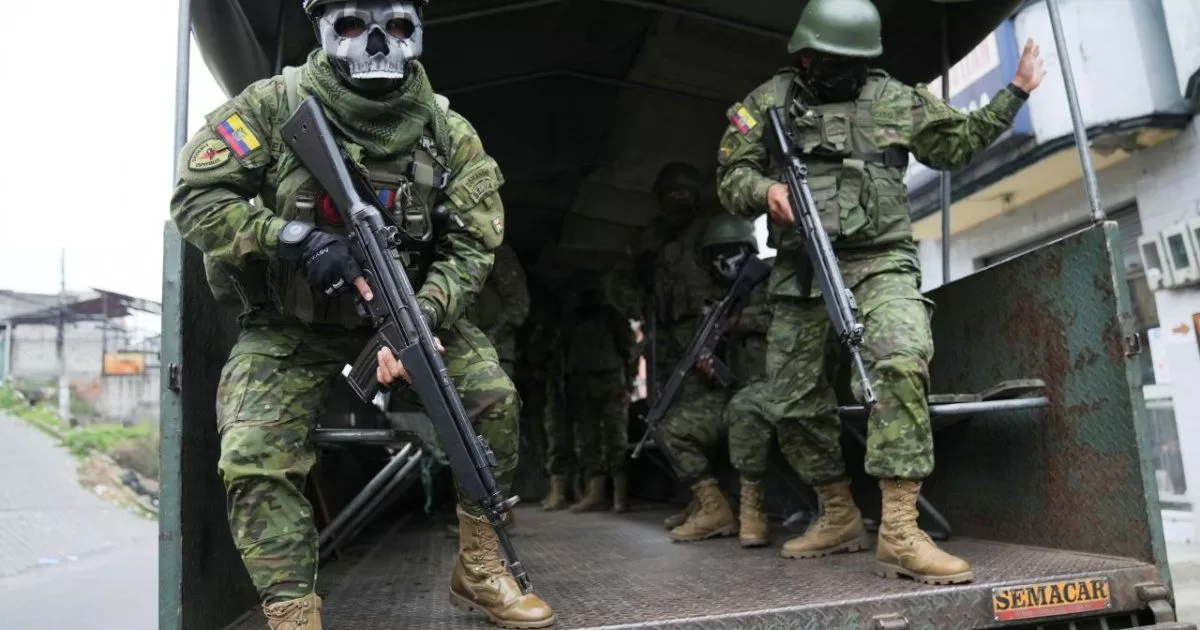MEXICO CITY.- The global expansion of Mexican cartels triggered an unprecedented crisis in Ecuador, evidenced by street violence and the declaration of an “internal armed conflict” by the president, Daniel Noboa.
What motivates the presence of these cartels in the South American country?
Ecuador’s strategic location between the main cocaine producers, Colombia and Peru, makes it an attractive starting point. Taking advantage of institutional weakness and corruption, cartels have found Ecuador a favorable territory for drug smuggling, ingeniously using containers of bananas, the country’s main export, to hide cocaine.
Vanda Felbab-Brown, senior researcher at the Strobe Talbott Center for Security, Strategy and Technology at the Brookings Institute, highlights the confluence of factors that make Ecuador vulnerable. “There is a confluence of factors and, yes, there are bananas, a huge number of containers and establishments and covers for smuggling all over the world, in Europe, from Europe to Turkey and other parts of the world,” she said.
In just a few years, the experience of Mexican cartels has turned Ecuador into the shipping port for almost a third of the cocaine that reaches Europe, according to a report by the United Nations Office on Drugs and Crime.
The cartels’ strategy abroad reflects their local model: ensuring territorial control through alliances with local gangs. This approach led to a rapid increase in the homicide rate in Ecuador, rising from six per 100,000 inhabitants in 2016 to approximately 40 per 100,000 last year.
Fernando Carrión, professor of Political Science at the Latin American Faculty of Social Sciences in Ecuador, points out that the externalization of violence, where local gangs carry out the actions, exacerbated the problem. The cartels’ shift from cash to drugs fueled violence, increasing local consumption and money laundering.
The situation is further complicated by the connection of the Mexican cartels with local gangs, such as the “Choneros” and the “Lobos.” Violence has spread from prisons to the streets, evidenced by the assassination of presidential candidate Fernando Villavicencio and the disappearance of local gang leaders.
Against this background, Noboa described 20 drug trafficking gangs as terrorist groups and authorized the army to “neutralize” them. However, the effectiveness of these measures remains to be seen.
Mexican signs in New Zealand and Australia
This phenomenon is not exclusive to Ecuador; Nations like New Zealand and Australia have also seen an increase in violence with the arrival of Mexican cartels. According to experts, the presence of these cartels not only poses criminal challenges, but also strategic ones, threatening stability and good governance in various regions.
According to a 2016 report from the Australian Center for Strategic and Defense Studies, prepared by Dr. Anthea McCarthy-Jones, in the country, “the emergence of Mexican drug cartels in local markets presents challenges not only criminal but also strategic”.
“Their presence threatens not only to increase the supply of illegal drugs in Australia, but also to foment turf wars, increase the number of weapons in the country, monopolize security resources and threaten the stability and good governance of transit points. in the South Pacific,” the report stated.
Source: With information from AP

